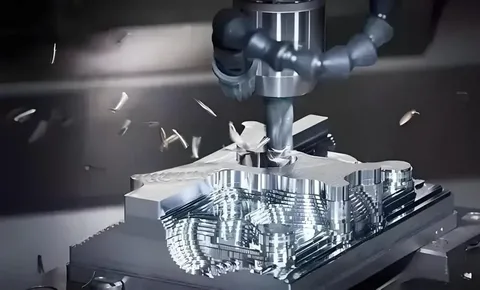Running a successful restaurant in 2025 requires more than just excellent food and outstanding service. The digital transformation of the food service industry has made modern Point of Sale (POS) systems an essential tool for restaurant owners. From improving efficiency to enhancing customer satisfaction, a modern restaurant POS offers numerous advantages. In this article, we will explore the top 10 benefits of using a modern restaurant POS in 2025 in detail.
1. Enhanced Order Management
A modern restaurant POS streamlines order-taking and management by reducing human errors and improving accuracy. With digital menus, handheld devices, and online ordering integration, orders are automatically sent to the kitchen without delays or miscommunication. This ensures that customers receive exactly what they ordered, improving their overall dining experience.
Additionally, some modern POS systems come with AI-powered features that suggest modifications based on customer preferences, dietary restrictions, or past orders. This enhances personalization and makes the ordering process seamless. Some systems also allow real-time tracking of orders, so customers know exactly when their food will arrive, whether for dine-in, takeout, or delivery.
2. Faster Transactions and Payment Processing
Speed and convenience are crucial in the restaurant industry. A modern POS system supports multiple payment methods, including credit/debit cards, mobile payments, QR code payments, and even cryptocurrency. Contactless payment options improve transaction speed, reduce wait times, and enhance customer satisfaction.
With advancements in technology, POS systems in 2025 also include self-service kiosks that allow customers to place their orders and make payments without interacting with a cashier. This speeds up the process, reduces human errors, and minimizes staffing costs. Moreover, these systems can integrate with mobile wallets and loyalty programs, making transactions even more seamless for returning customers.
3. Real-Time Inventory Management
One of the biggest challenges for restaurant owners is keeping track of inventory. A modern POS system provides real-time inventory tracking, automatically updating stock levels when ingredients or supplies are used. This feature helps reduce waste, prevent stock shortages, and improve cost management by allowing restaurant managers to make data-driven purchasing decisions.
Moreover, advanced POS systems can predict demand based on sales trends, seasons, and historical data, helping restaurants optimize inventory purchases. Automated reordering ensures that essential ingredients never run out, while detailed reports highlight any potential overstock or understock situations. This level of control leads to cost savings and a smoother operational workflow.
4. Seamless Integration with Online Ordering and Delivery Services
With the increasing demand for online food ordering, restaurants must integrate their POS systems with delivery platforms such as Uber Eats, DoorDash, and Grubhub. A modern POS ensures that online orders are automatically processed, reducing the need for manual entry and minimizing errors. This leads to a more efficient workflow and enhances the restaurant’s ability to handle both dine-in and delivery services effectively.
Furthermore, some POS systems offer their own integrated delivery management tools, allowing restaurants to manage their delivery fleet, optimize routes, and track deliveries in real-time. This eliminates the dependency on third-party apps and reduces commission costs, ultimately improving profitability.
5. Advanced Analytics and Reporting
A modern restaurant POS system provides powerful analytics and reporting tools that give restaurant owners valuable insights into sales trends, customer preferences, peak hours, and employee performance. These insights help restaurant managers make informed decisions about menu adjustments, staffing, and marketing strategies, ultimately leading to increased profitability.
For example, if the data shows that a specific dish is not performing well, managers can decide to modify the recipe, offer promotions, or remove it from the menu. Additionally, data-driven reports help in planning for high-demand periods, ensuring optimal staffing levels and food supply to meet customer needs efficiently.
6. Improved Customer Relationship Management (CRM)
Understanding customer preferences is key to building loyalty. A modern POS system collects and stores customer data, including purchase history, favorite dishes, and special requests. This allows restaurants to personalize promotions, offer loyalty programs, and send targeted marketing campaigns, enhancing customer retention and increasing repeat business.
Loyalty programs can be seamlessly integrated into the POS system, offering points, discounts, and rewards based on customer spending. Additionally, automated marketing campaigns via SMS or email can keep customers engaged, encouraging them to return by offering personalized discounts or exclusive offers.
7. Employee Management and Productivity Monitoring
Managing staff efficiently is essential for a restaurant’s success. A modern POS system includes employee management features such as shift scheduling, attendance tracking, and performance analysis. It can also integrate with payroll systems, reducing administrative workload and ensuring employees are paid accurately and on time.
POS systems can also provide performance-based insights, helping managers identify high-performing employees and reward them accordingly. This creates a positive work environment and improves overall productivity. In addition, automated shift management ensures proper staffing during peak hours, preventing overstaffing or understaffing issues.
8. Enhanced Security and Fraud Prevention
Cybersecurity is a growing concern in the restaurant industry. A modern POS system incorporates advanced security measures such as end-to-end encryption, secure login authentication, and fraud detection tools. These features protect sensitive customer data, prevent unauthorized transactions, and reduce the risk of financial losses due to fraud or employee theft.
Modern POS systems also offer role-based access control, ensuring that only authorized personnel have access to sensitive financial data. This minimizes internal fraud and data breaches, maintaining trust between the restaurant and its customers.
9. Increased Mobility with Cloud-Based Solutions
Cloud-based POS systems allow restaurant owners and managers to access business data from anywhere, anytime. Whether monitoring sales performance remotely or making real-time adjustments to the menu, cloud-based solutions provide the flexibility and control needed to manage a restaurant efficiently, even when not physically present.
Additionally, cloud-based POS systems ensure that all data is backed up automatically, reducing the risk of data loss due to system crashes or power failures. This also allows for seamless software updates, ensuring that restaurants always have the latest features and security patches without disrupting operations.
10. Compliance with Regulations and Tax Reporting
Modern restaurant POS systems help ensure compliance with local regulations, including tax laws, food safety standards, and labor laws. Automated tax calculations, digital receipts, and detailed financial reports simplify tax filing and reduce the risk of errors, ensuring that the restaurant remains in good standing with regulatory authorities.
With features like automated tip reporting, sales tax calculations, and labor law compliance tools, modern POS systems make tax reporting seamless. This saves time and reduces the likelihood of financial penalties due to non-compliance.
Conclusion
A modern restaurant POS system is more than just a tool for processing transactions—it is an all-in-one solution that enhances efficiency, improves customer service, and boosts profitability. By integrating features like real-time inventory tracking, online ordering, analytics, and employee management, restaurant owners can streamline operations and stay ahead of the competition in 2025. Investing in a robust and modern POS system is no longer optional; it is a necessity for success in the fast-paced and technology-driven restaurant industry.
By leveraging these advanced features, restaurants can improve operational efficiency, reduce costs, and offer an exceptional dining experience that keeps customers coming back. Whether you’re running a small café or a large restaurant chain, a modern POS system is an invaluable asset that helps drive growth and long-term success.
















Leave a Reply